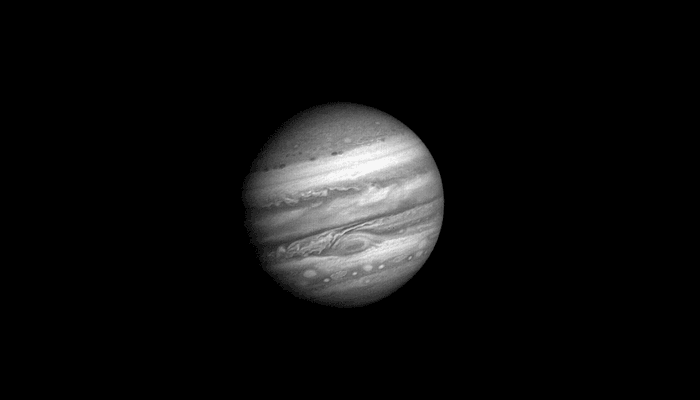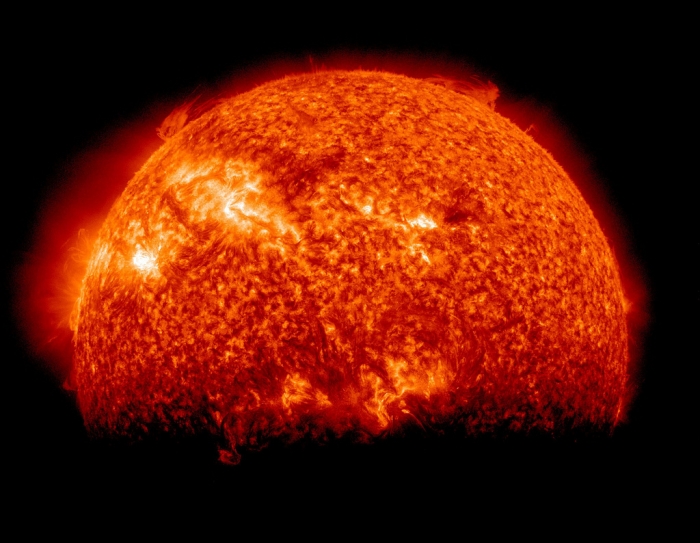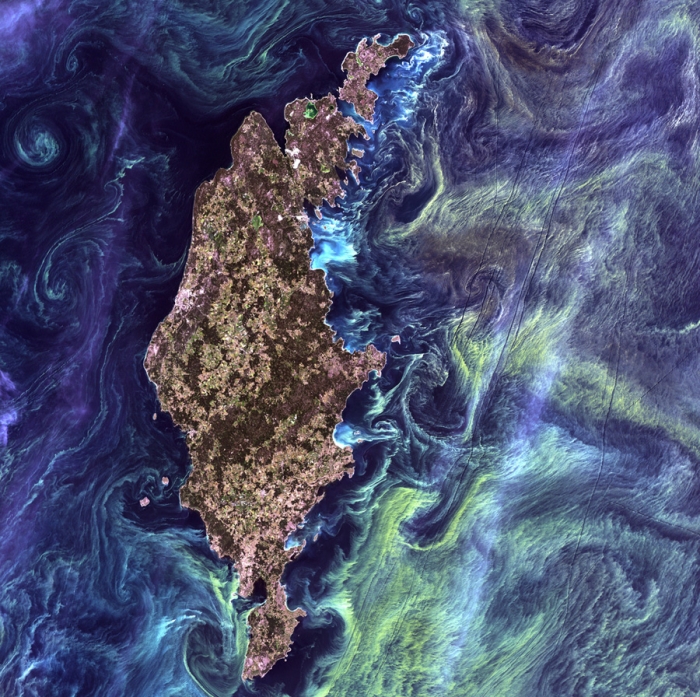Posts tagged 'Nasa'
Stardust
”Voyager 1 and Voyager 2 are the ships that opened the Solar System for the human species, trailblazing a path for future generations. Before their launch, in August and September 1977, we were almost wholly ignorant about most of the planetary part of the Solar System. In the next dozen years, they provided our first detailed, close-up information on many new worlds–some of them previously known only as fuzzy disks in the eyepieces of ground-based telescopes, some merely as points of light, and some whose very existence was unsuspected. They are still returning reams of data.
These spacecraft have taught us about the wonders of other worlds, about the uniqueness and fragility of our own, about beginnings and ends. They have given us access to most of the Solar System–both in extent and in mass. They are the ships that first explored what may be homelands of our remote descendants.” – from Pale Blue Dot by Carl Sagan
I’ve always been rathered enamoured with the Voyager program – especially the Golden Record, which you’ll get a close-up of at 2:35 – and the fantastic visuals in the attached short by PostPanic do a great job of embroidering JPL‘s masterwork with an appropriate sense of reverence and wonder.
Stardust‘s director, Mischa Rozema, wanted to (among other things) create a film that showed what the universe looked like, “from a different point of view. For example, standing on the surface of the sun looking upwards or witnessing the death and birth of a star - not at all scientifically correct but instead a purely artistic interpretation of such events.”
As you’ll see, he succeeded and the end result (for me, at least) provided a much needed shift in perspective. It’s gorgeous; the perfect companion for a late-night, contemplative, solitary sesh. Enjoy!
[ Stardust ]
posted by respondcreate on Feb. 20, 2013 in Videos | tags: animation, astronomy, hd, mischa rozema, nasa, perspective, postpanic, space, spiritual, voyager
Perpetual Ocean
“This visualization shows ocean surface currents around the world during the period from June 2005 through December 2007. The visualization does not include a narration or annotations; the goal was to use ocean flow data to create a simple, visceral experience…read more on nasa.gov”
Know what’s a bummer? Military spending is on the rise while NASA funding has been on a steady decline since 1992. A big thanks is due to Erica for sending this in to remind us that they’re still doing great things and our boy Neil for some much needed perspective.
Click here to see moar NASA radness on The Tripatorium™.
posted by respondcreate on Apr. 22, 2012 in Videos | tags: animation, electronic music, hd, nasa, ocean, perspective, space, trippy
Earth
“Time lapse sequences of photographs taken with a special low-light 4K-camera by the crew of expedition 28 & 29 onboard the International Space Station from August to October, 2011.”
I have a new favorite video on the internet! It’s this one! You should check it out! Holy shit this is so dope; dim the lights, turn the volume way up and full screen this bitch immediately. Michael König took the contemplative, ethereal ambient breaks of the super-talented Jan Jelinek and combined them with high-definition (4K!) low-light time lapses that NASA took recently and were cool enough to give away for free online.
PRO TIP: Keep your eyes peeled for the minuscule thunderstorms and ribboning, neon auroras. Thanks again, internet.
P.S. To see a list of locations for each shot used in the film click here.
[ Earth -Time Lapse View from Space/Fly Over -Nasa, ISS (vid by Michael König @ koenigm.com) ]
posted by respondcreate on Nov. 13, 2011 in Videos | tags: aurora borealis, colorful, earth, electronic music, hd, international space station, jan jelinek, michael könig, nasa, nature, space, time lapse, trippy
End of an Era
“There’s plenty of housework to be done here on earth – and our commitment to it must be steadfast – but we’re the kind of species that needs a frontier for fundamental biological reasons. Every time humanity stretches itself it receives a jolt of productive vitality that can carry it for centuries.” –Carl Sagan
Reid Gower was commissioned by NASA to create a series of films that would pay tribute to Carl Sagan, the brilliant mind the center of Cosmos: A Personal Voyage, one of my all-time favorite documentary series produced by PBS. The video attached above is part six of (currently) seven of The Sagan Series so click the previous link to see the rest of them. Oh and Cosmos is getting a reboot courtesy of Seth MacFarlane (of Family Guy fame) and Neil Degrasse Tyson, the host of NOVA scienceNOW (another fantastic PBS property that you can watch for free online). Needless to say, I’m really looking forward to it.
[ The Sagan Series (part 6) - End of an Era: The Final Shuttle Launch ]
posted by respondcreate on Aug. 31, 2011 in Videos | tags: astronomy, carl sagan, cosmos, hd, inspirational, nasa, reid gower, science, space, the sagan series
Voyager 1 Approaches Jupiter

“One frame of this image was taken each Jupiter day (approximately 10 hours) between January 6 and February 9, 1979, as the space probe [Voyager I] flew from 58 million to 31 million kilometers from Jupiter during that time. The small, round, dark spots appearing in some frames are the shadows cast by the moons passing between Jupiter and the Sun, while the small, white flashes around the planet, are the moons themselves.”
Inspired by the gorgeous shot of Jupiter’s ‘Great Red Spot’ tizmatti posted a couple of weeks back, I decided to read up on Jupiter’s unique atmosphere. Turns out it’s a pretty tumultuous place comprised of constantly shifting cloud layers and swirling, violent vortices (of which the ‘Great Red Spot’ is the largest). It’s truly fascinating stuff.
[ NASA: Jupiter via Wikipedia ]
posted by respondcreate on Apr. 08, 2011 in Pictures | tags: animated gif, astronomy, jupiter, nasa, science, space, time lapse, voyager
Spring Eclipse

“Twice a year, SDO enters an eclipse season where the spacecraft slips behind Earth for up to 72 minutes a day. Unlike the crisp shadow one sees on the sun during a lunar eclipse, Earth’s shadow has a variegated edge due to its atmosphere, which blocks the sun light to different degrees depending on its density.”
This image comes to us courtesy of NASA’s Solar Dynamic Observatory – for more fantastic hi-def imagery of the cosmos head over to the NASA Goddard Photo and Video’s Flickr stream.
[ SDO Sees Spring Eclipse via Gizmodo ]
posted by respondcreate on Apr. 04, 2011 in Pictures | tags: astronomy, eclipse, nasa, sdo, space, sun
Solar prominence
“When a rather large-sized (M 3.6 class) flare occurred near the edge of the Sun, it blew out a gorgeous, waving mass of erupting plasma that swirled and twisted over a 90-minute period… read more”
The good folks at NASA captured this on February 24, 2011 and it helped reacquaint me with just how small and insignificant I am – a realization I always find is tremendously freeing. If you are as fascinated about this kind of stuff as I am you’ll probably enjoy reading more about solar prominences on wikipedia.
[ NASA's SDO Captures a Monster Prominence [video] via Gizmodo ]
posted by respondcreate on Mar. 07, 2011 in Videos | tags: astronomy, humbling, nasa, nature, space, sun, trippy
Van Gogh from Space

In the style of Van Gogh’s painting “Starry Night,” massive congregations of greenish phytoplankton swirl in the dark water around Gotland, a Swedish island in the Baltic Sea. Read more here.
[ Van Gogh from Space via Gizmodo ]
posted by respondcreate on Nov. 20, 2010 in Pictures | tags: colorful, nasa, photography, space, trippy, van gogh